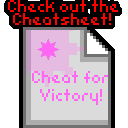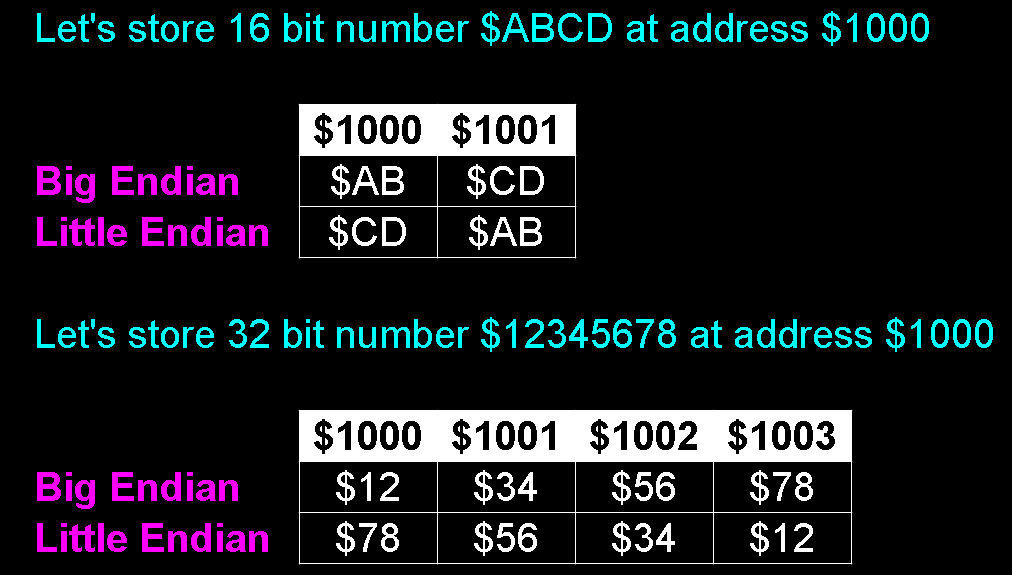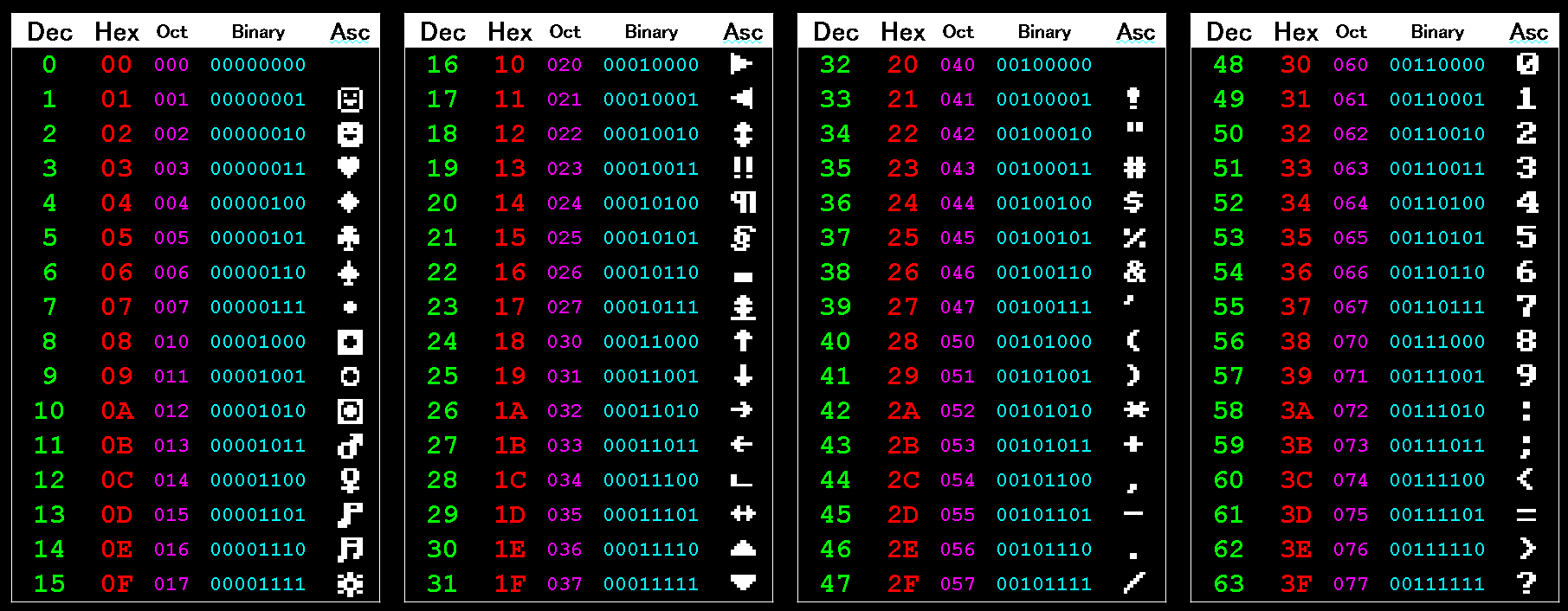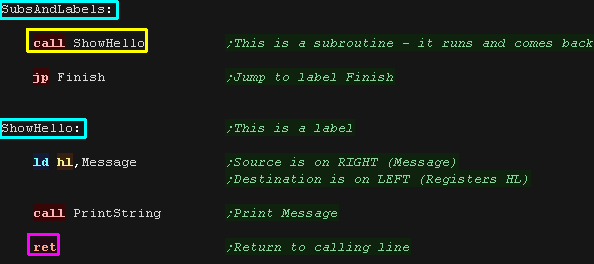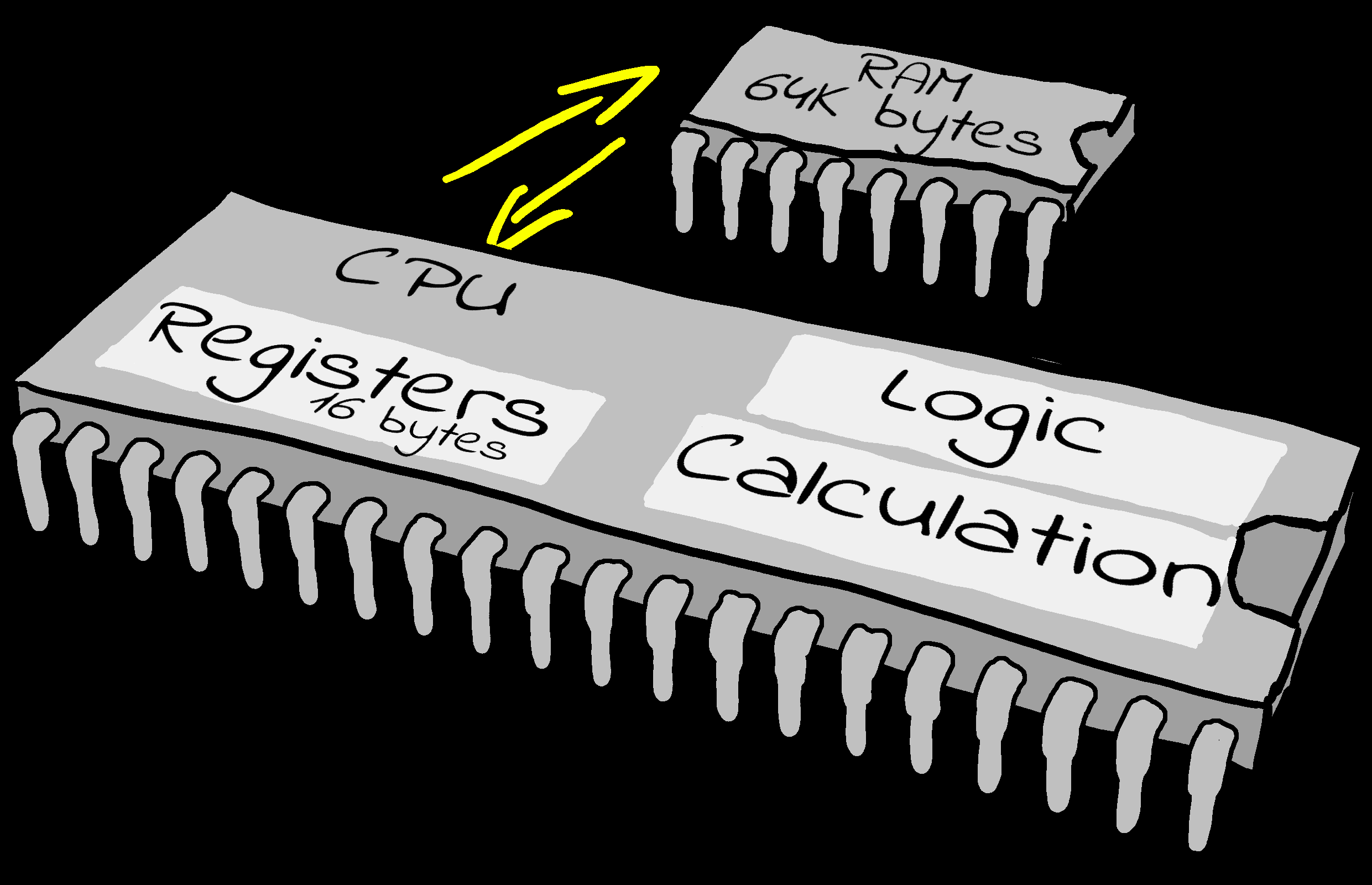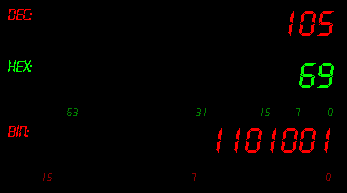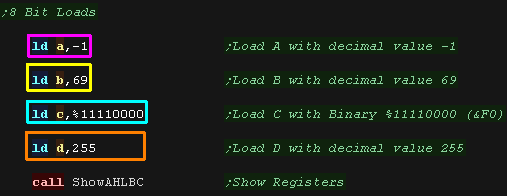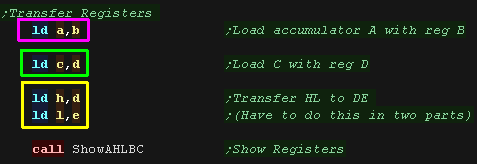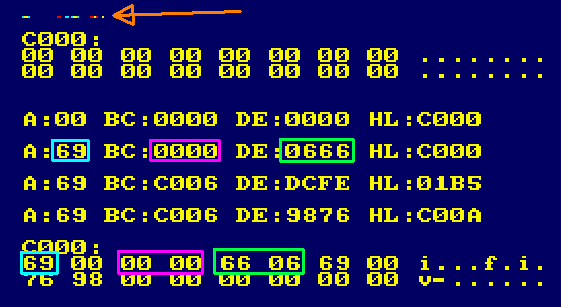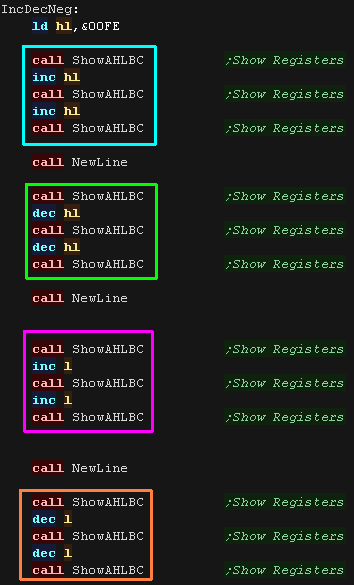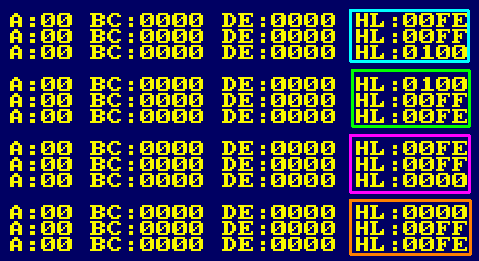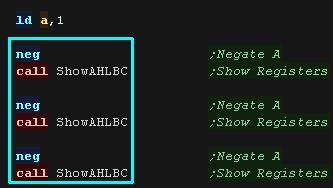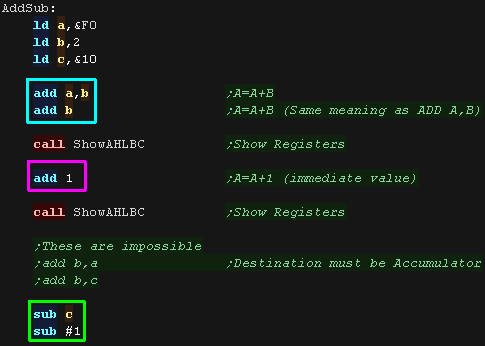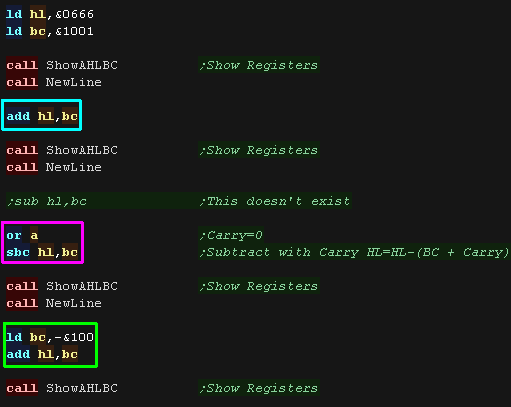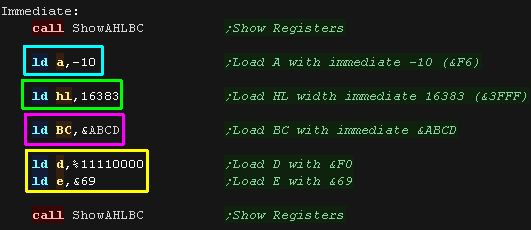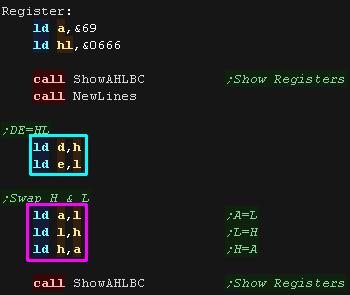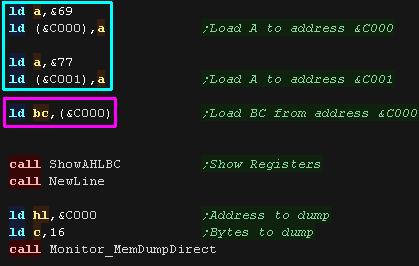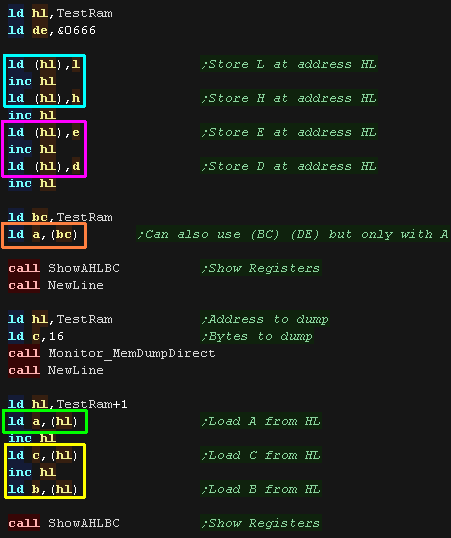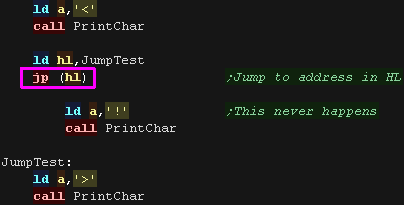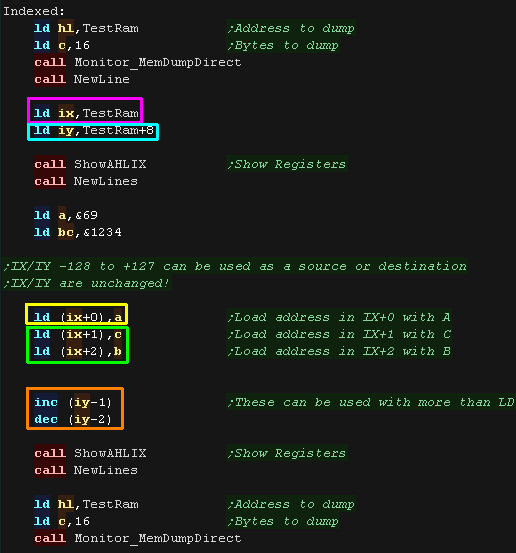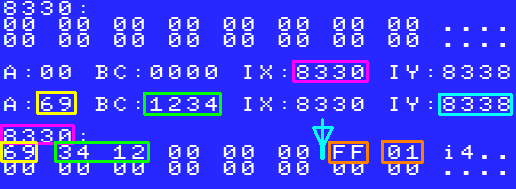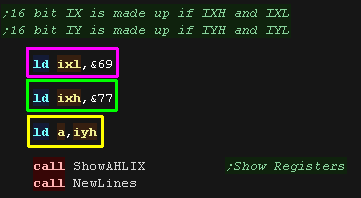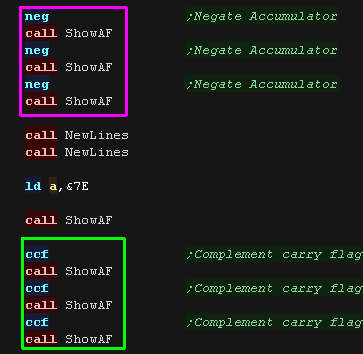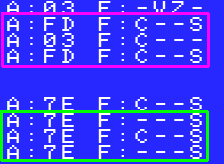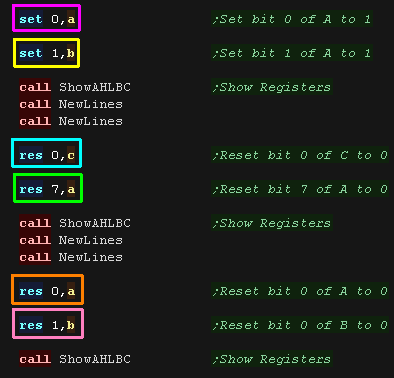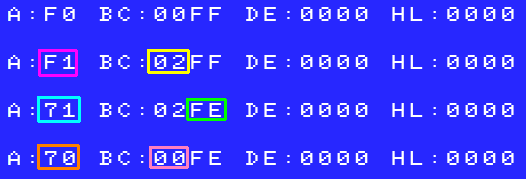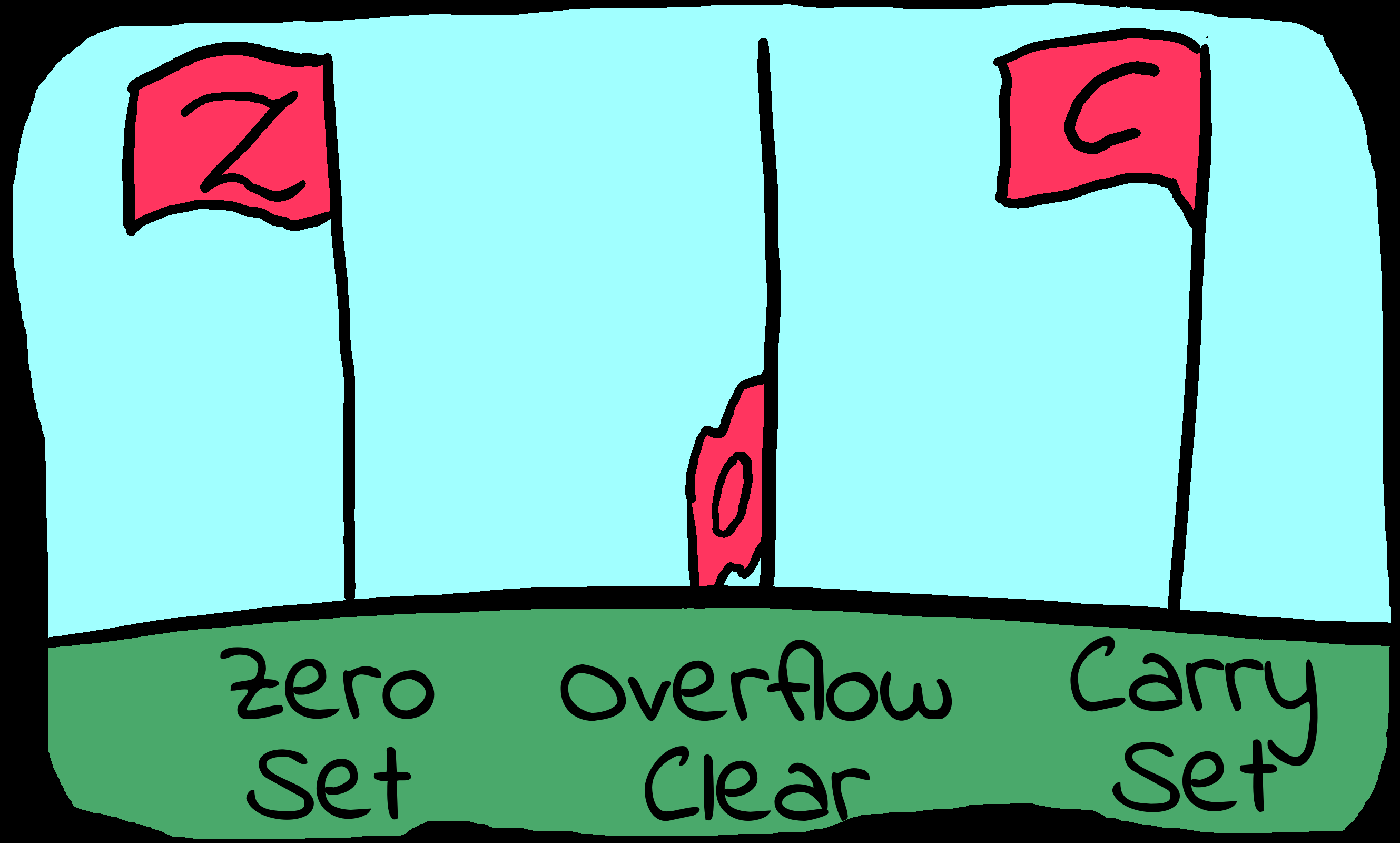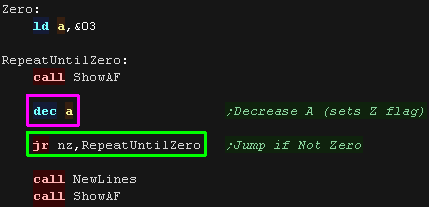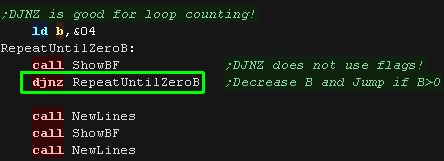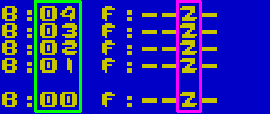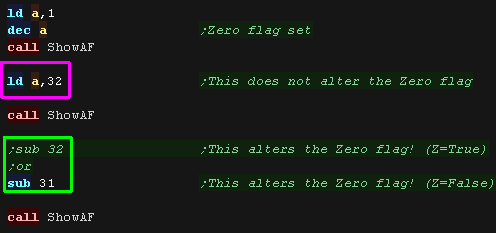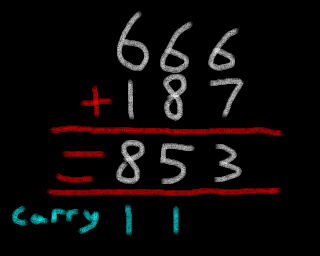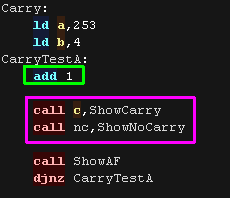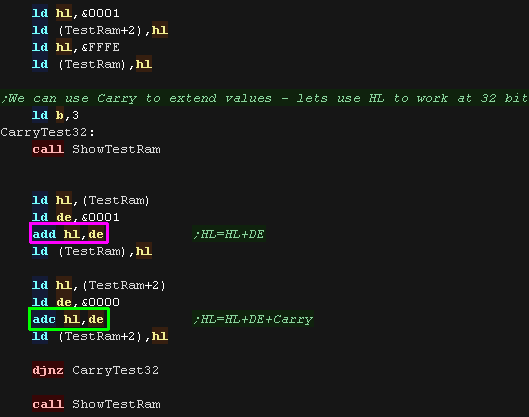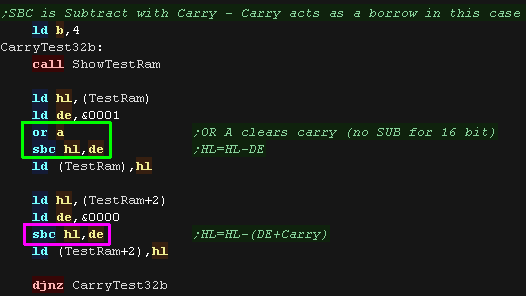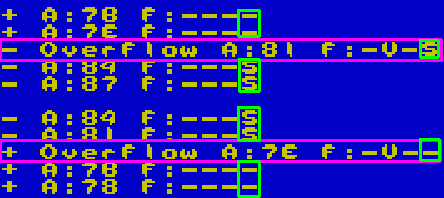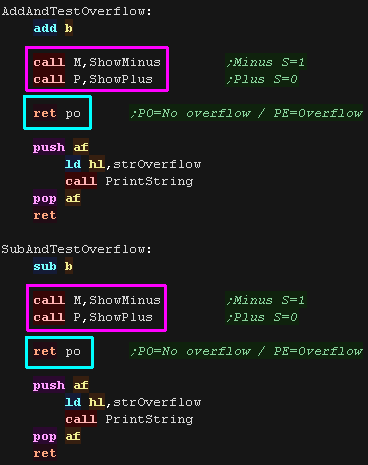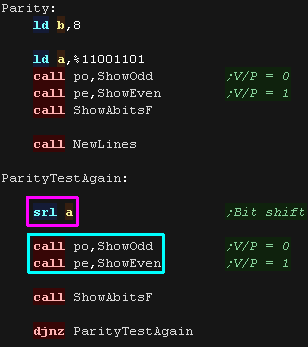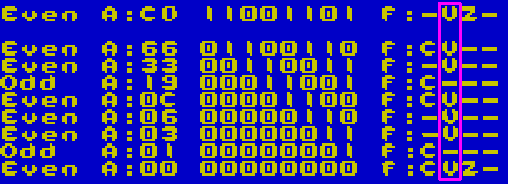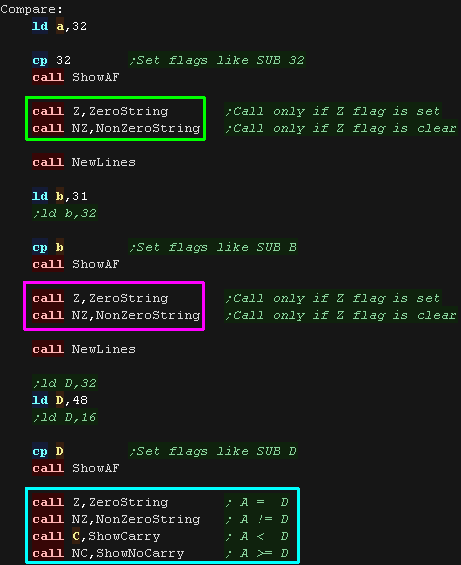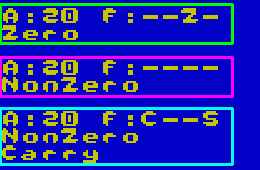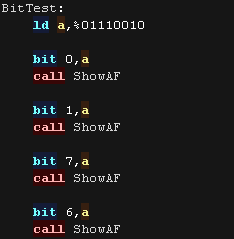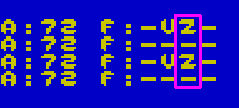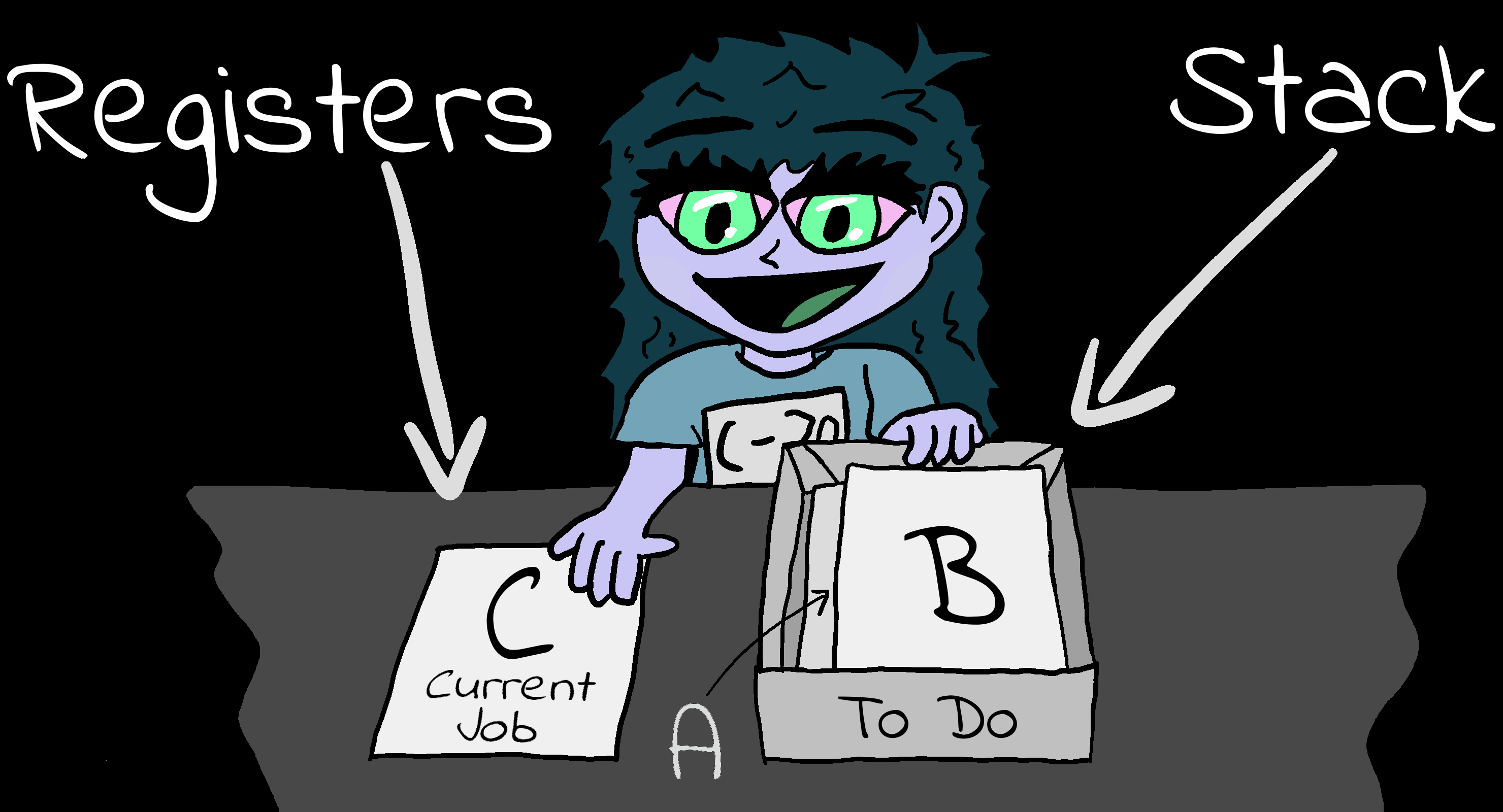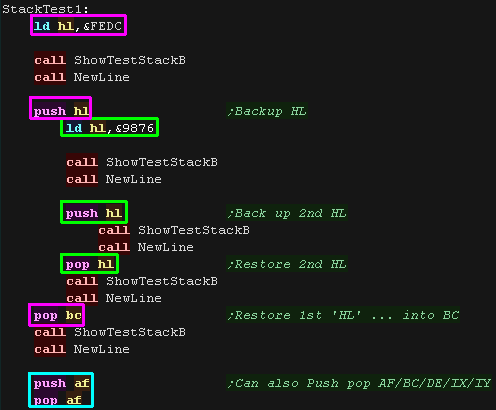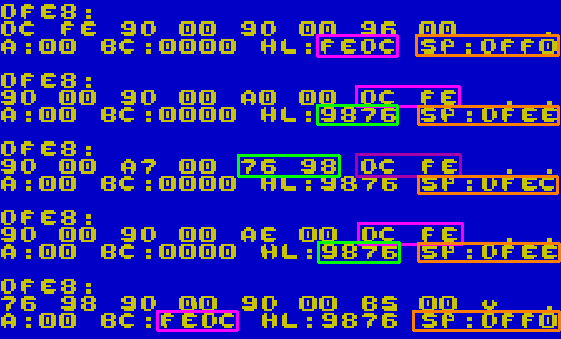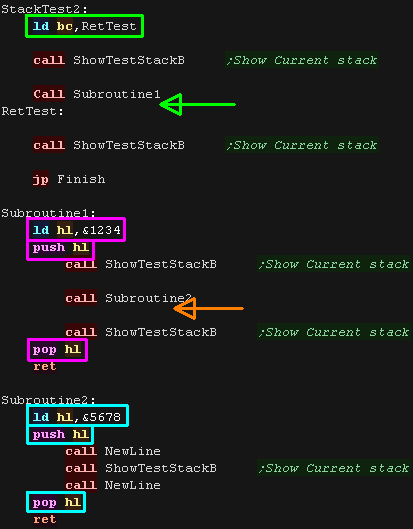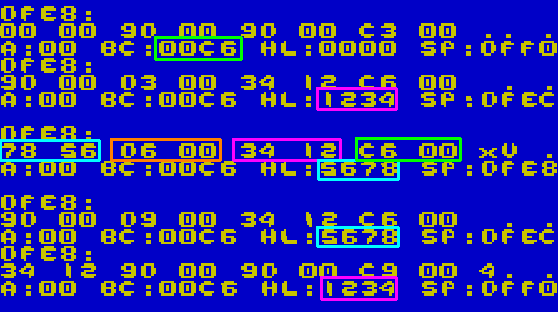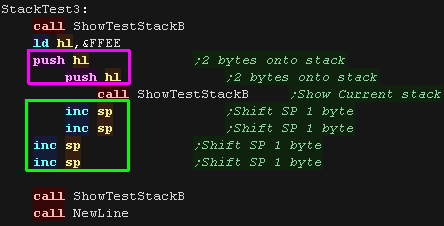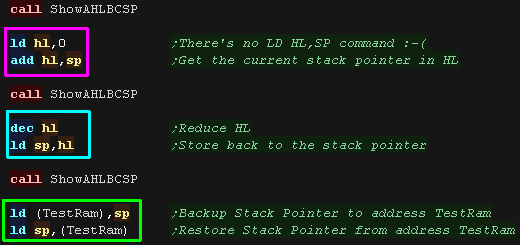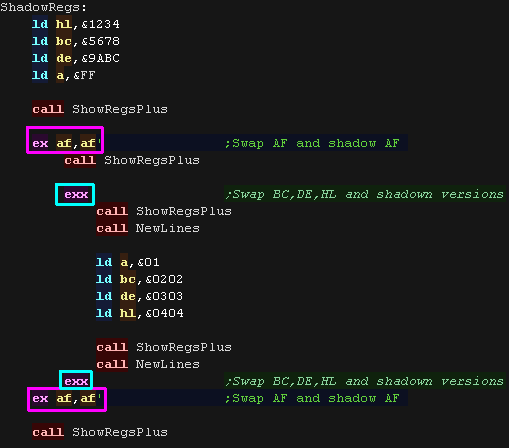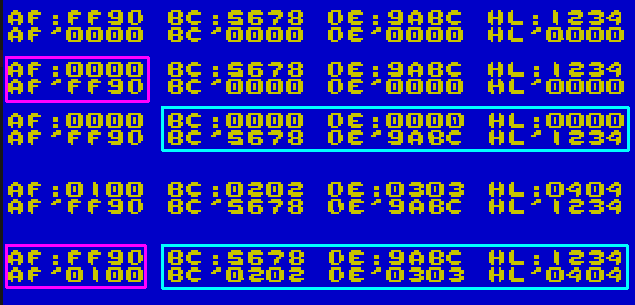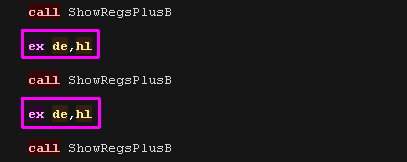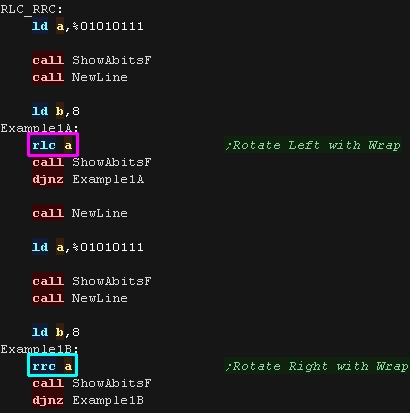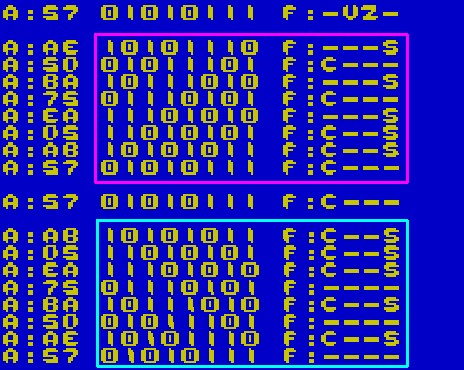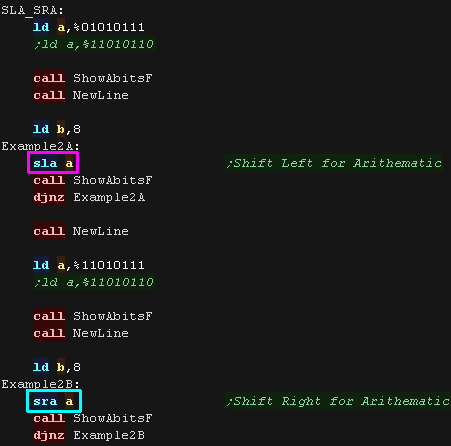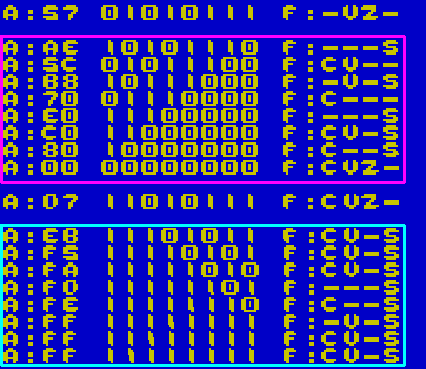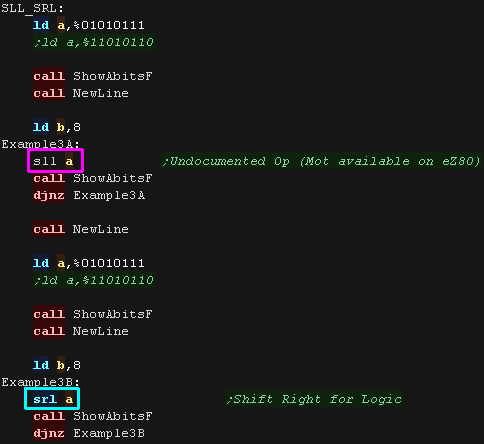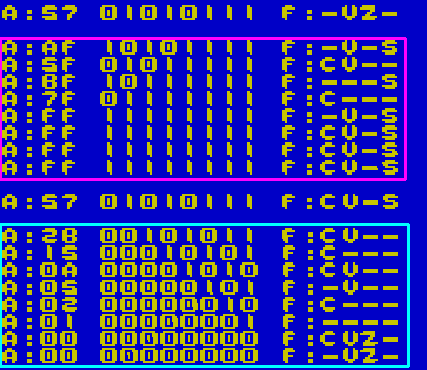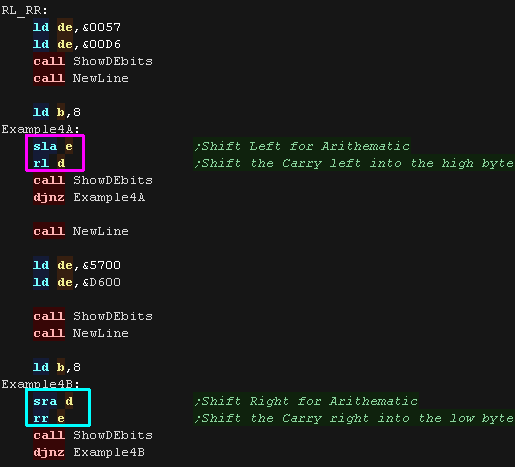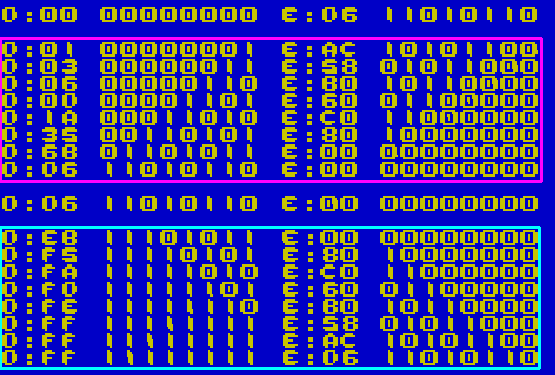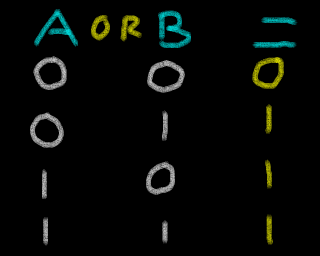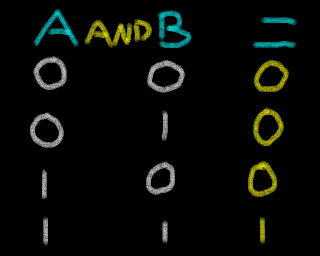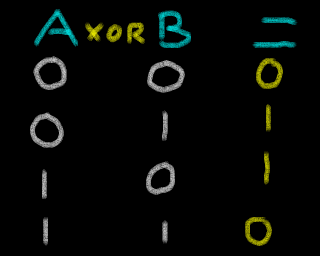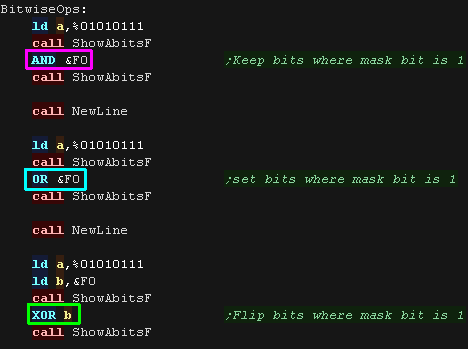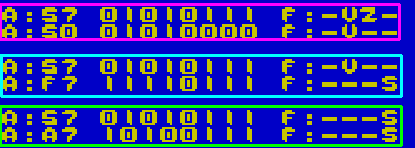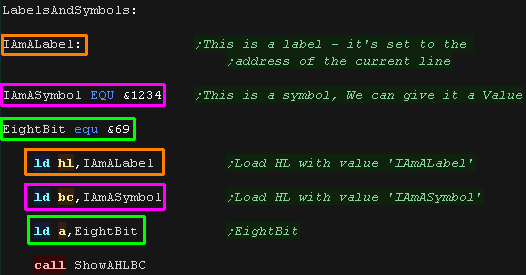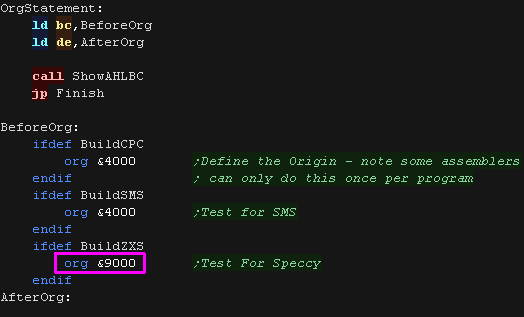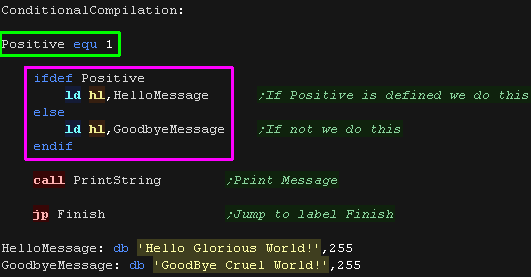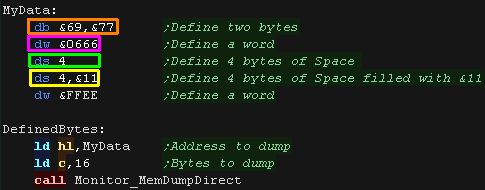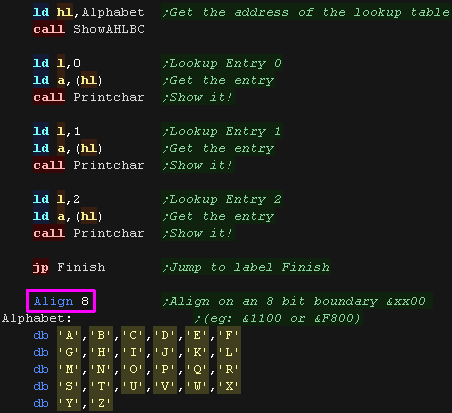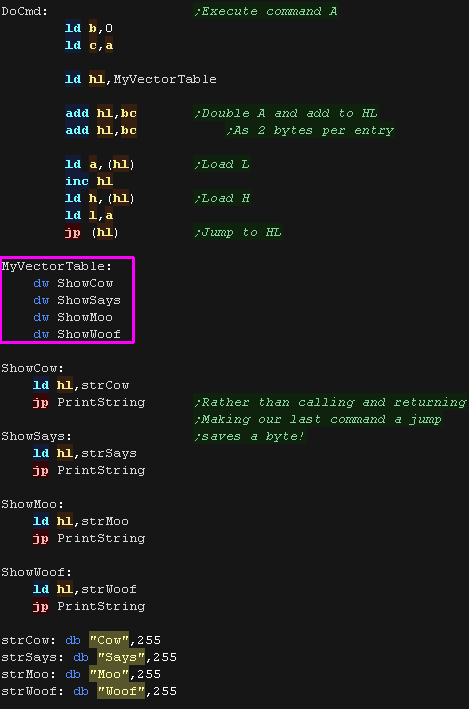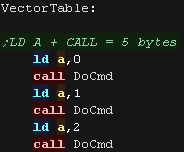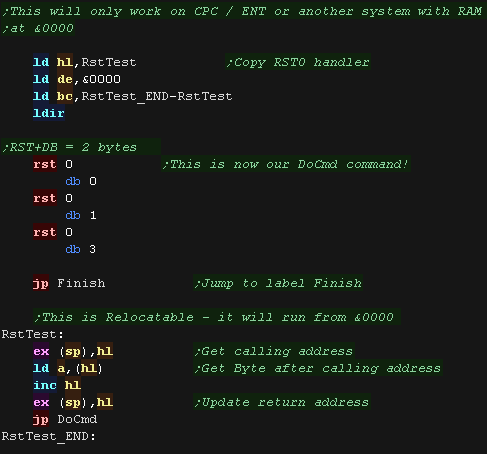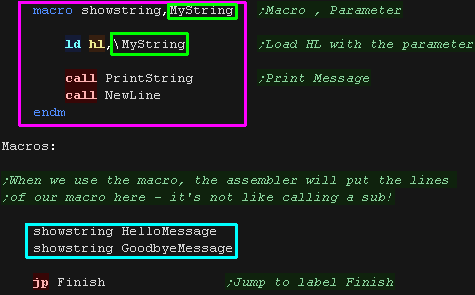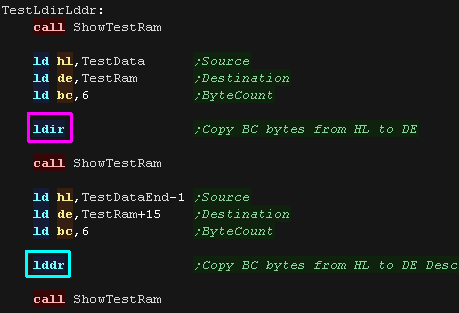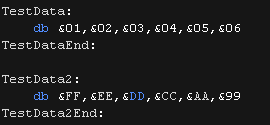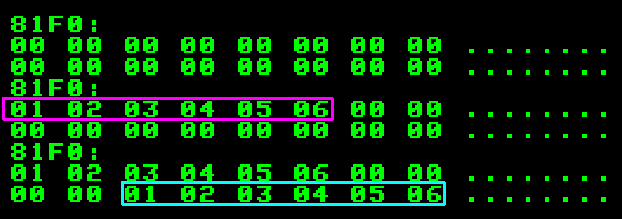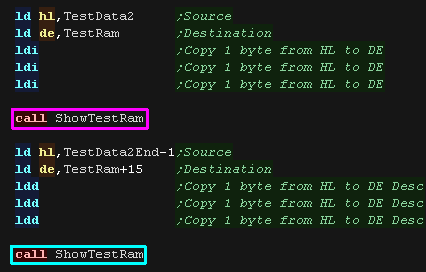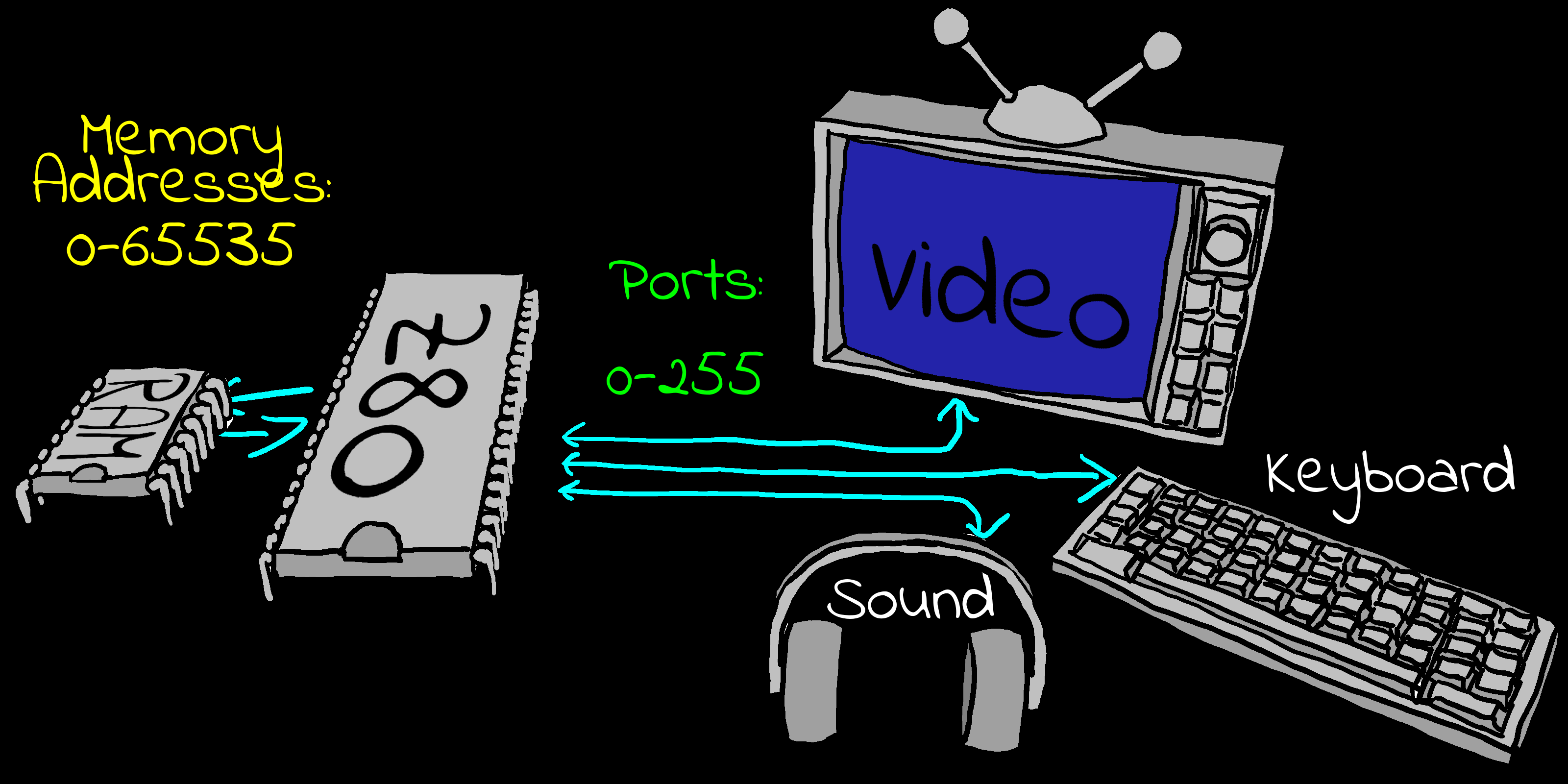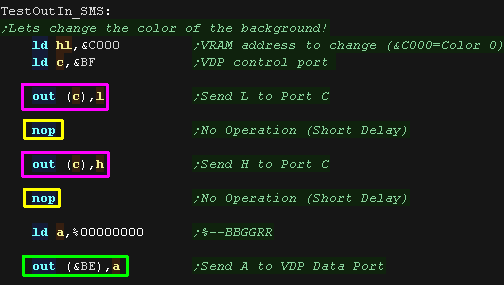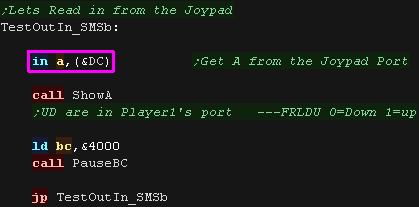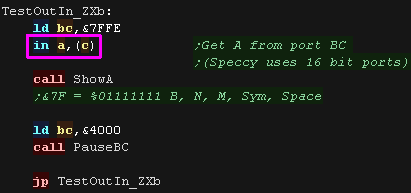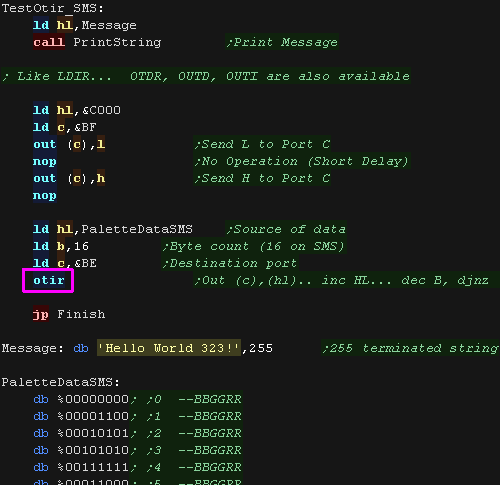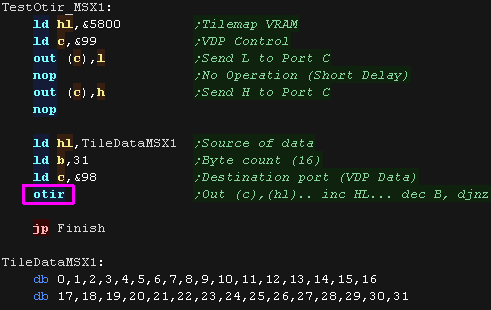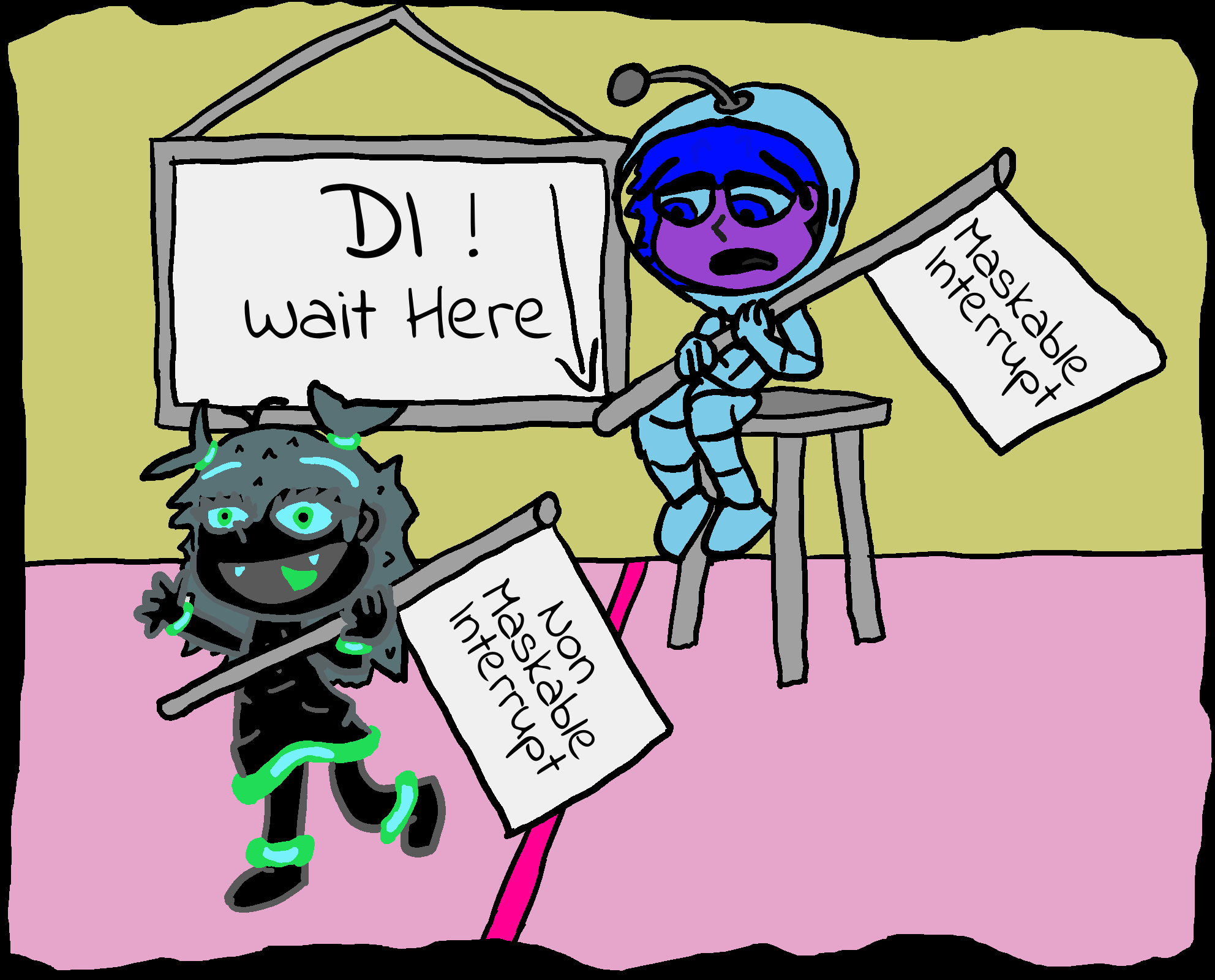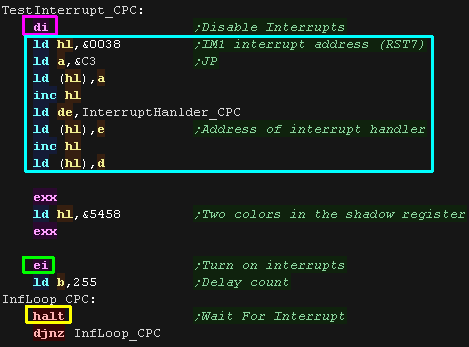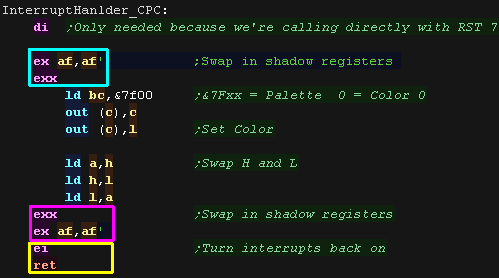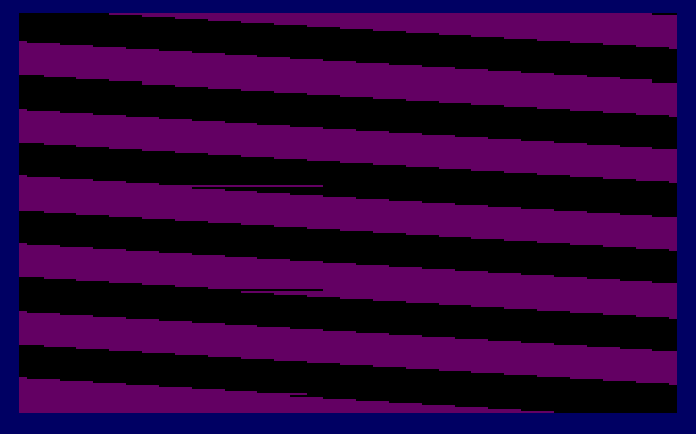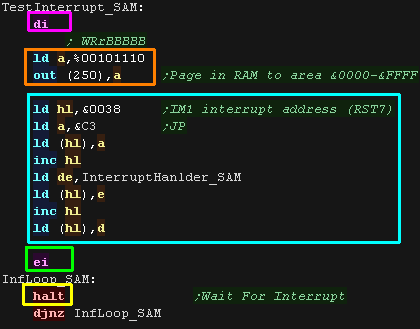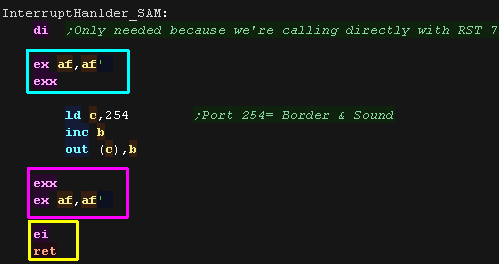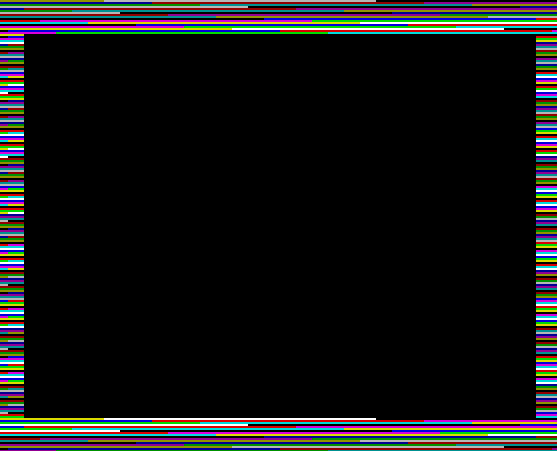| Mnemonic |
Desctiption |
Example |
Parameters |
Flags
affected |
| ADC r |
Add register r and the carry flag to the
Accumulator A. |
ADC B |
'r': (HL) (IX+#) (IY+#) A B C D E H L IXH IXL IYH
IYL |
S Z H V N C |
| ADC A,# |
Add 8 bit number # and the carry to A. |
ADC 128 |
'#': 0-255 ($00-$FF) |
S Z H V N C |
| ADC HL,rr |
Add 16 bit register rr and the carry to HL. |
ADC HL,BC |
'rr': BC DE HL SP |
S Z H V N C |
| ADD rr2,rr1 |
Add 16 bit register rr1 to 16 bit register rr2. |
ADD HL,BC |
'rr1': HL IX IY
'rr2': BC DE SP *HL IX IY* |
- - H - N C |
| ADD r |
Adds 8 bit register r to A. |
ADD B |
'r': (HL) (IX+#) (IY+#) A B C D E H L IXH IXL IYH
IYL |
S Z H V N C |
| ADD # |
Adds 8 bit value # to A. |
ADD B |
'#': 0-255 ($00-$FF) |
S Z H V N C |
| AND r |
Logical AND of bits in register r with Accumulator
A. |
AND B |
'r': (HL) (IX+#) (IY+#) A B C D E H L IXH IXL IYH
IYL |
S Z H V N C |
| AND # |
Logical AND of bits in 8 bit value # with
Accumulator A. |
AND $64 |
'#': 0-255 ($00-$FF) |
S Z H V N C |
| BIT b,r |
Test bit b from 8 bit register r and set the Z flag
to that bit. |
BIT 7,B |
'b': 0-7 (%76543210)
'r': (HL) (IX+#) (IY+#) A B C D E H L |
s Z H v N - |
| CALL addr |
Call Subroutine at address addr |
CALL $1000 |
'addr': 0-65535 ($0000-$FFFF) |
- - - - - - |
| CALL c,addr |
Call Subroutine at address addr only IF condition c
is true. |
CALL Z,$1000 |
'addr': 0-65535 ($0000-$FFFF)
'c': c m nc nz p po pe z |
- - - - - - |
| CCF |
Complement the Carry Flag. C flag will inverted |
CCF |
|
- - H - N C |
| CP r |
Compare the Accumulator to register r. |
CP B |
'r': (HL) (IX+#) (IY+#) A B C D E H L |
S Z H V N C |
| CP # |
Compare the Accumulator to 8 bit immediate value #. |
CP 32 |
'#':0-255 ($00-$FF) |
S Z H V N C |
| CPD |
Compare A to the byte at address HL and decrease HL
and BC. |
CPD |
|
S Z H V N - |
| CPDR |
Compare A to the byte at address HL and Decrease
and Repeat |
CPDR |
|
S Z H V N - |
| CPI |
Compare A to the byte at address HL and increase HL
but decrease BC (Bytecount). |
CPI |
|
S Z H V N - |
| CPIR |
Compare A to the byte at address HL and increase HL
but dec BC (Bytecount) and Repeat until a match occurs or BC=0. |
CPIR |
|
S Z H V N - |
| CPL |
Invert all bits of A (this is known as 'One's
Complement'). |
CPL |
|
- - H - N - |
| DAA |
Decimal Adjust Accumulator (Binary Coded Decimal) |
DAA |
|
S Z H V - C |
| DEC r |
Decrease value in 8 bit register r by one. |
DEC B |
'r': (HL) (IX+#) (IY+#) A B C D E H L IXH IXL IYH
IYL |
S Z H V N - |
| DEC rr |
Decrease value in 16 bit register rr by one. |
DEC HL |
Valid registers for 'rr': BC DE HL IX IY SP |
- - - - - - |
| DI |
Disable Maskable Interrupts |
DI |
|
- - - - - - |
| DJNZ ofst |
Decrease B and Jump if NonZero to address offset #. |
DJNZ label |
'ofst': -128 to +127 |
- - - - - - |
| EI |
Enable Maskable Interrupts. |
EI |
|
- - - - - - |
| EX (SP),HL |
Exchange HL with the top item of the stack |
EX (SP),HL |
|
- - - - - - |
| EX AF,AF' |
Exchange the Accumulator and Flags with the shadow
Accumulator and Flags. |
EX AF,AF' |
|
S Z H V N C |
| EX DE,HL |
Exchange HL and DE |
EX DE,HL |
|
- - - - - - |
| EXX |
Exchange the registers BC, DE and HL with the
shadow registers |
EXX |
|
- - - - - - |
| HALT |
Stop the CPU until an interrupt occurs. |
HALT |
|
- - - - - - |
| IM 0 |
Enable Interrupt mode 0. |
IM 0 |
|
- - - - - - |
| IM 1 |
Enable Interrupt mode 1. |
IM 1 |
|
- - - - - - |
| IM 2 |
Enable Interrupt mode 2. |
IM 2 |
|
- - - - - - |
| IN A,(#) |
Read in an 8 bit byte A from 8 bit port #. |
IN A,($10) |
'#': 0-255 ($00-$FF) |
S Z H V N - |
| IN r,(C) |
Read in an 8 bit byte into register r from port (C) |
IN A,(C) |
'r': A B C D E H L |
S Z H V N - |
| INC r |
Increase value in 8 bit register r by one. |
INC B |
'r': (HL) (IX+#) (IY+#) A B C D E H L IXH IXL IYH
IYL |
S Z H V N - |
| INC rr |
Increase value in 16 bit register r by one. |
INC HL |
'rr': BC DE HL IX IY SP |
- - - - - - |
| IND |
Read a byte IN from port (C) and save it to the
address in HL, then Decrease HL and B. |
IND |
|
s Z h v N - |
| INDR |
Read a byte IN from port (C) and save it to the
address in HL. Then Decrease HL and B, repeat until B=0. |
INDR |
|
s Z h v N - |
| INI |
Read a byte IN from port (C) and save it to the
address in HL, then increase HL and decrease B. |
INI |
|
s Z h v N - |
| INIR |
Read a byte IN from port (C) and save it to the
address in HL, then increase HL and decrease B, repeat until B=0. |
INIR |
|
s Z h v N - |
| JP (HL) |
Jump to the address in register HL. |
JP (HL) |
|
- - - - - - |
| JP addr |
Jump to the 16 bit address addr. |
JP $4000 |
'addr': 0-65535 ($0000-$FFFF) |
- - - - - - |
| JP c,addr |
Jump to the 16 bit address addr only IF condition c
is true in the flags register.
|
JP Z,$4000 |
'addr': 0-65535 ($0000-$FFFF)
'c': c m nc nz p po pe z |
- - - - - - |
| JR ofst |
Jump to the 8 bit offset #. |
JR TestLabel |
'#': -128 to +127 |
- - - - - - |
| JR c,ofst |
Jump to the 8 bit offset ofst IF condition c is
true. |
JR Z,TestLabel |
'ofst': -128 to +127 |
- - - - - - |
| LD (rr),A |
Load the 8 bit value in the Accumulator into the
address in register rr. |
LD (DE),A |
'rr': BC DE HL IX+# IY SP |
- - - - - - |
| LD (HL),B |
Load the 8 bit value in register r into the address
in register rr. |
LD (HL),B |
'r': A B C D E H L
'rr': HL IX+# IY+# |
- - - - - - |
| LD (addr),A |
Load the 8 bit value in the Accumulator into memory
address addr. |
LD ($C000),A |
'addr': 0-65535 ($0000-$FFFF) |
- - - - - - |
| LD (addr),rr |
Load the 16 bit value in register pair rr into
memory address addr. |
LD ($C000),BC |
'addr': 0-65535 ($0000-$FFFF)
'rr': BC DE HL IX IY SP |
- - - - - - |
| LD A,(rr) |
Load the 8 bit value from the address in register
rr into the Accumulator. |
LD A,(DE) |
'rr': BC DE HL IX+# IY SP |
- - - - - - |
| LD A,(addr) |
Load the 8 bit value from memory address addr into
the Accumulator. |
LD A,($C000) |
'##': 0-65535 ($0000-$FFFF) |
- - - - - - |
| LD r,# |
Load the 8 bit register r with value #. |
LD B,32 |
'r': A B C D E H L IXH IXL IYH IYL
'#': 0-255 ($00-$FF) |
- - - - - - |
| LD A,I |
Load the 8 bit value from the I register to the
Accumulator. |
LD A,I |
|
S Z H V N - |
| LD A,R |
Load the 8 bit value from the R register to the
Accumulator. |
LD A,R |
|
S Z H V N - |
| LD rr,(addr) |
Load the 16 bit register pair rr from memory
address addr. |
LD BC,($C000) |
'rr': BC DE HL IX IY SP
'addr': 0-65535 ($0000-$FFFF) |
- - - - - - |
| LD rr,#### |
Load the 16 bit register pair rr with immediate
value #### |
LD BC,$C000 |
'rr': BC DE HL IX IY SP
'addr': 0-65535 ($0000-$FFFF) |
- - - - - - |
| LD I,A |
Load the 8 bit value from the Accumulator into the
I register. |
LD I,A |
|
- - - - - - |
| LD R,A |
Load the R register with the 8 bit value in the
Accumulator. |
LD R,A |
|
- - - - - - |
| LD SP,HL |
Load the 16 bit Stack Pointer register SP with the
value in HL. |
LD SP,HL |
|
- - - - - - |
| LD r1,r2 |
Load the 8 bit register r1 from register r2. |
LD H,B |
'r1' and 'r2': A B C D E H L IXH IXL IYH IYL |
- - - - - - |
| LD r,(rr) |
Load the 8 bit register r from the address in
register rr. |
LD B,(HL) |
'r': A B C D E H L
'rr': HL IX+# IY+# |
- - - - - - |
| LDD |
Load and Decrement. This command copies bytes
downwards from HL to DE with BC as a byte count. |
LDD |
|
- - H V N - |
| LDDR |
Load, Decrement and Repeat. This command copies
bytes downwards from HL to DE with BC as a Byte count (with
repeat) |
LDDR |
|
- - H V N - |
| LDI |
Load and Increment. This command copies bytes
upwards from HL to DE with BC as a byte count (without repeat). |
LDI |
|
- - H V N - |
| LDIR |
Load, Decrement and Repeat. This command copies
bytes upwards from HL to DE with BC as a byte count (with repeat). |
LDIR |
|
- - H V N - |
| NEG |
Negate the 8 bit value in the accumulator (Two's
Complement of the number). |
NEG |
|
S Z H V N C |
| NOP |
No Operation. This command has no effect on any
registers or memory. |
NOP |
|
- - - - - - |
| OR r |
Logical OR of bits in register r with Accumulator
A. |
OR B |
'r': (HL) (IX+#) (IY+#) A B C D E H L IXH IXL IYH
IYL |
S Z H V N C |
| OR # |
Logical OR of bits in 8 bit value # with
Accumulator A. |
OR $64 |
'#': 0-255 ($00-$FF) |
S Z H V N C |
| OTDR |
Out Decrement Repeat. This command transfers B
bytes from HL to port (C) moving downwards. |
OTDR |
|
s Z h v N - |
| OTIR |
Out Increment Repeat. This command transfers B
bytes from HL to port (C) moving upwards. |
OTIR |
|
s Z h v N - |
| OUT (#),A |
Output an 8 bit byte from A to 8 bit port #. |
OUT ($10),A |
'#': 0-255 ($00-$FF) |
- - - - - - |
| OUT (C),r |
On a system with 8 bit ports, this will output an 8
bit byte from register r to port (C) . |
OUT (C),r |
'r': A B C D E H L |
- - - - - - |
| OUT (C),0 |
On a system with 8 bit ports, this will output an 8
bit byte zero to port (C). |
OUT (C),0 |
|
- - - - - - |
| OUTD |
Out and Decrement. This command transfers a byte
from HL to port (C) moving downwards. |
OUTD |
|
s Z h v N - |
| OUTI |
Out and Increment. This command transfers a byte
from HL to port (C) moving upwards. |
OUTI |
|
s Z h v N - |
| POP rr |
Pop a pair of bytes off the stack into 16 bit
register rr. |
POP AF |
'rr': AF BC DE HL IX IY |
all if AF / none |
| PUSH rr |
Push a pair of bytes from 16 bit register rr onto
the top of the stack. |
PUSH AF |
'rr': AF BC DE HL IX IY |
- - - - - - |
| RES b,r |
Reset bit b from 8 bit register r to 0. |
RES 7,B |
'b': 0-7 (%76543210)
'r': (HL) (IX+#) (IY+#) A B C D E H L |
- - - - - - |
| RET |
Return from a subroutine. |
RET |
|
- - - - - - |
| RET c |
Return from a subroutine only if condition c is
true. |
RET Z |
'c': c m nc nz p po pe z |
- - - - - - |
| RETI |
Return from an interrupt. |
RETI |
|
- - - - - - |
| RETN |
Return from a non maskable interrupt (NMI). |
RETN |
|
- - - - - - |
| RL r |
Rotate bits in register r Left with Carry. |
RL B |
'r': (HL) (IX+#) (IY+#) A B C D E H L |
S Z H P N C |
| RLC r |
Rotate bits in register r Left and Copy the top bit
to the Carry. |
RLC B |
'r': (HL) (IX+#) (IY+#) A B C D E H L |
S Z H P N C |
| RLD |
Rotate Left for binary coded Decimal. |
RLD |
|
S Z H V N - |
| RR r |
Rotate bits in register r Right with carry. |
RR B |
'r': (HL) (IX+#) (IY+#) A B C D E H L |
S Z H P N C |
| RRC r |
Rotate bits in register r Right and Copy the bottom
bit to the Carry. |
RLC B |
'r': (HL) (IX+#) (IY+#) A B C D E H L |
S Z H P N C |
| RRD |
Rotate Right for binary coded Decimal. |
RRD |
|
S Z H V N - |
| RST # |
ReSeT function. RST is a single byte call to $00xx
address. |
RST $38 |
|
- - - - - - |
| SBC r |
Subtract register r and the carry flag from the
Accumulator A. |
SBC B |
'r': (HL) (IX+#) (IY+#) A B C D E H L IXH IXL IYH
IYL |
S Z H V N C |
| SBC A,# |
Subtract 8 bit number # and the carry from A. |
SBC 128 |
'#': 0-255 ($00-$FF) |
S Z H V N C |
| SBC HL,rr |
Subtract 16 bit register rr and the carry from HL. |
SBC HL,BC |
'rr': BC DE HL SP |
S Z H V N C |
| SCF |
Set the carry flag to 1. |
SCF |
|
- - H - N C |
| SET b,r |
Set bit b from 8 bit register r to 1. |
SET 7,B |
'b': 0-7 (%76543210)
'r': (HL) (IX+#) (IY+#) A B C D E H L |
- - - - - - |
| SLA r |
Shift the bits register r Left for Arithmetic. |
SLA A |
'r': (HL) (IX+#) (IY+#) A B C D E H L |
S Z H P N C |
| SLL r |
Shift the bits in register r Left Logically (for
unsigned numbers). |
SLL A |
'r': (HL) (IX+#) (IY+#) A B C D E H L |
S Z H P N C |
| SRA r |
Shift the bits in register r Right for Arithmetic.
|
SRA A |
'r': (HL) (IX+#) (IY+#) A B C D E H L |
S Z H P N C |
| SRL r |
Shift the bits in register r Right Logically. |
SRL A |
'r': (HL) (IX+#) (IY+#) A B C D E H L |
S Z H P N C |
| SUB r |
Subtract 8 bit register r from A. |
SUB B |
'r': (HL) (IX+#) (IY+#) A B C D E H L IXH IXL IYH
IYL |
S Z H V N C |
| SUB # |
Subtract 8 bit value # from A. |
SUB 32 |
'#': 0-255 ($00-$FF) |
S Z H V N C |
| XOR r |
Logical XOR (eXclusive OR) of bits in register r
with Accumulator A. |
XOR B |
'r': (HL) (IX+#) (IY+#) A B C D E H L IXH IXL IYH
IYL |
S Z H V N C |
| XOR # |
Logical XOR (eXclusive OR) of bits in immediate
value # with Accumulator A. |
XOR $64 |
'#': 0-255 ($00-$FF) |
S Z H V N C |



